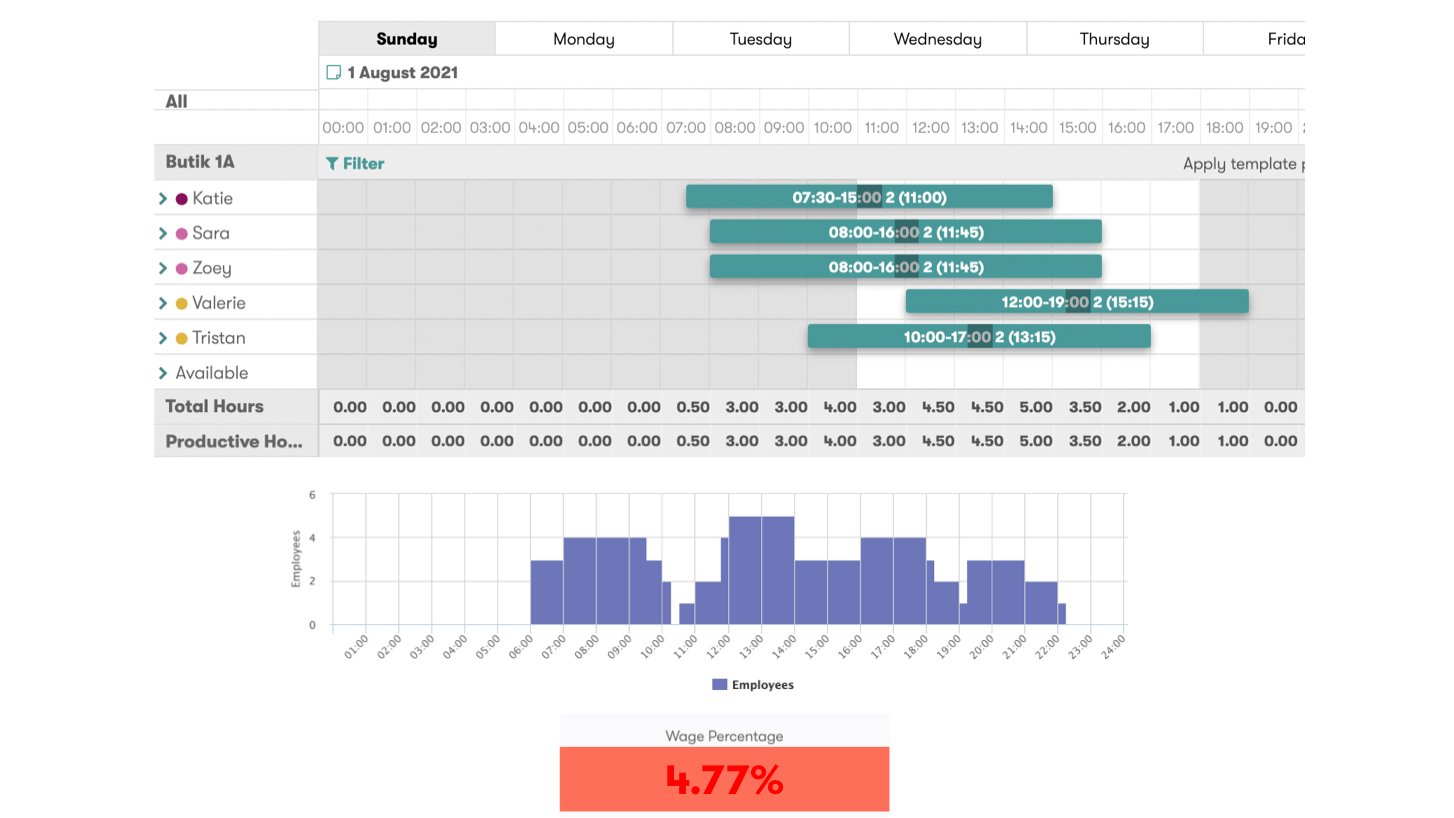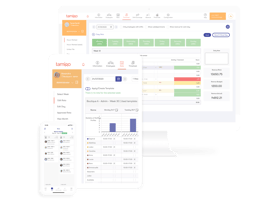Staff are the beating heart of operations — the through-line that runs across every department, from the meat counter to the warehouse. Working on ways to retain them is always a top priority.
In this article, we’ll look at reducing staff turnover in grocery retail. And the sometimes overlooked role that scheduling can play.
Why is retention on everyone’s minds?
A focus on employee retention in retail isn't new. HR have had strategies in place around it for decades. But retention rates – as manageable, trackable values – have come into their own in recent years.
This is partly due to the emergence of software like HCM and WFM solutions.
These centralise a mass of operational data that was previously stuck in different systems, making it easier to track and benchmark turnover.
But if that’s been gradual transformation, then Covid was a sudden one.
The pandemic was the trigger for many people to quit their jobs. It's a phenomenon dubbed the Great Resignation. A Microsoft survey of workers across industries found a staggering 41% were thinking of leaving their current employment!
As a result, businesses found themselves severely short-staffed. In Germany, it was as many as 1 in 3. In this atmosphere, retaining employees becomes even more vital.
The effects of low employee retention

It costs you more money to hire a new employee that retain a current one.
There’s the process of recruitment, onboarding and training. Plus the loss in productivity as your new employee gets fully up to speed.
According to PeopleKeep, it costs around $1500 (€1400) all told.
There’s also the question of employee engagement. Your staff are more productive when they work with people they like.
Take it from leading research firm Gallup: “Our research has repeatedly shown a concrete link between having a best friend at work and the amount of effort employees expend in their job.”
Working in a supermarket with a high churn rate of colleagues (and friends) will have its effect.
Why do supermarket workers leave?
Retail employee turnover has always been on the high side. There’s lots of contributing factors.
Retail workforces tend to swing fairly young for one. Many people in their teens and twenties aren’t looking for a job for life.
But one thing you shouldn’t overlook is work life balance. If the Great Resignation has taught us anything, it’s that we all expect more flexibility around our work hours.
Consider this survey from job comparison site Breakroom. They polled thousands of supermarket workers on how well they rated their employer. What set the best and worst-rated apart?
As Breakroom out it, “The biggest differences are revealed by how they each run their shift schedules.”
Respondents appreciated having a schedule available well in advance. And having the ability to make changes if they needed to.
Reduce staff turnover with smarter scheduling
When staff have more control over their schedules they feel trusted and valued. Engaged employees like these are less likely to start looking for other jobs.
So let’s talk employee retention strategies. What steps can your grocery retail business take to promote a better work life balance?
More efficient forecasting

As the Breakroom survey showed, staff want a clear picture of upcoming hours so they can plan ahead.
Sometimes calling staff in at the last minute is unavoidable - when someone else is sick for example. But at other times, it’s because a supermarket’s shift planning isn’t as comprehensive as it could be.
Your store and department managers have lots of data to help them meet the ebb and flow of future demand; figures like historic sales numbers, upcoming absences and workload forecasts. But too often these numbers aren’t readily accessible.
WFM software brings them all together.
Through integrations or imports, admins in tamigo (typically regional managers or HR) make these numbers visible to managers as create schedules.
Better still, a solution like tamigo automates a lot of the forecasting involved. For example, by generating staffing profiles. These are visualisations of recommended future staffing levels that managers can plan towards.
A schedule that’s available to anyone, anywhere
Having a shift plan pinned to wall in the staff room isn’t ideal. It’s literally the only place staff can see their upcoming hours. And taking a photo of it doesn’t help.
This schedule will quickly become covered with notes and crossings-out, due to shift-swaps and no-shows. Or, as is common with supermarkets, staff being ’lent’ to other stores.
How are employees kept up to date with this when they’re at home? Typically, the store manager will have to call or email everyone whose shifts are affected.
It’s a time-consuming, messy process.
In tamigo, it’s simple. The schedule is purely digital and always available in the app. Whenever the manager makes a change, it’s updated instantly in-app for everyone to see.
Employees can be sure of where and when they’re working, and with whom. And managers save hours of admin time every week on complicated administrative tasks.
Learn why ALDI Denmark implemented tamigo nationwide in 2021, and what benefits they've seen in operational efficiency and employee retention.
Shift swaps that are easy and compliant

Shift swaps give staff a lot more control over their schedules. Plus, it makes them feel appreciated — it demonstrates your supermarket cares about their needs.
Swaps can come with certain drawbacks though.
For managers, they result in the wrong staff taking on the wrong shifts. Because as opposed to other retailers, the range of different skills needed across departments is far greater in a supermarket.
Perhaps even worse, swaps can result in breaches of contracts or labour regulations. The stuff of HR nightmares...
Implementing a shift swap policy is a good first step. If you want to go one better, WFM software features a bunch of tools to enable flexible scheduling — shift swaps included.
Staff request swaps via an app and managers can choose to approve or reject them. It’s easier for everyone!
And it’s safer. tamigo automatically ensures that swaps comply with all the labour laws and collective agreements configured in your system. And that shifts where certain skills are required are only taken by the appropriate employees.
That just about wraps it up – thanks for reading! If you want to learn more about how smarter scheduling can reduce staff turnover, head to tamigo's supermarket page.





